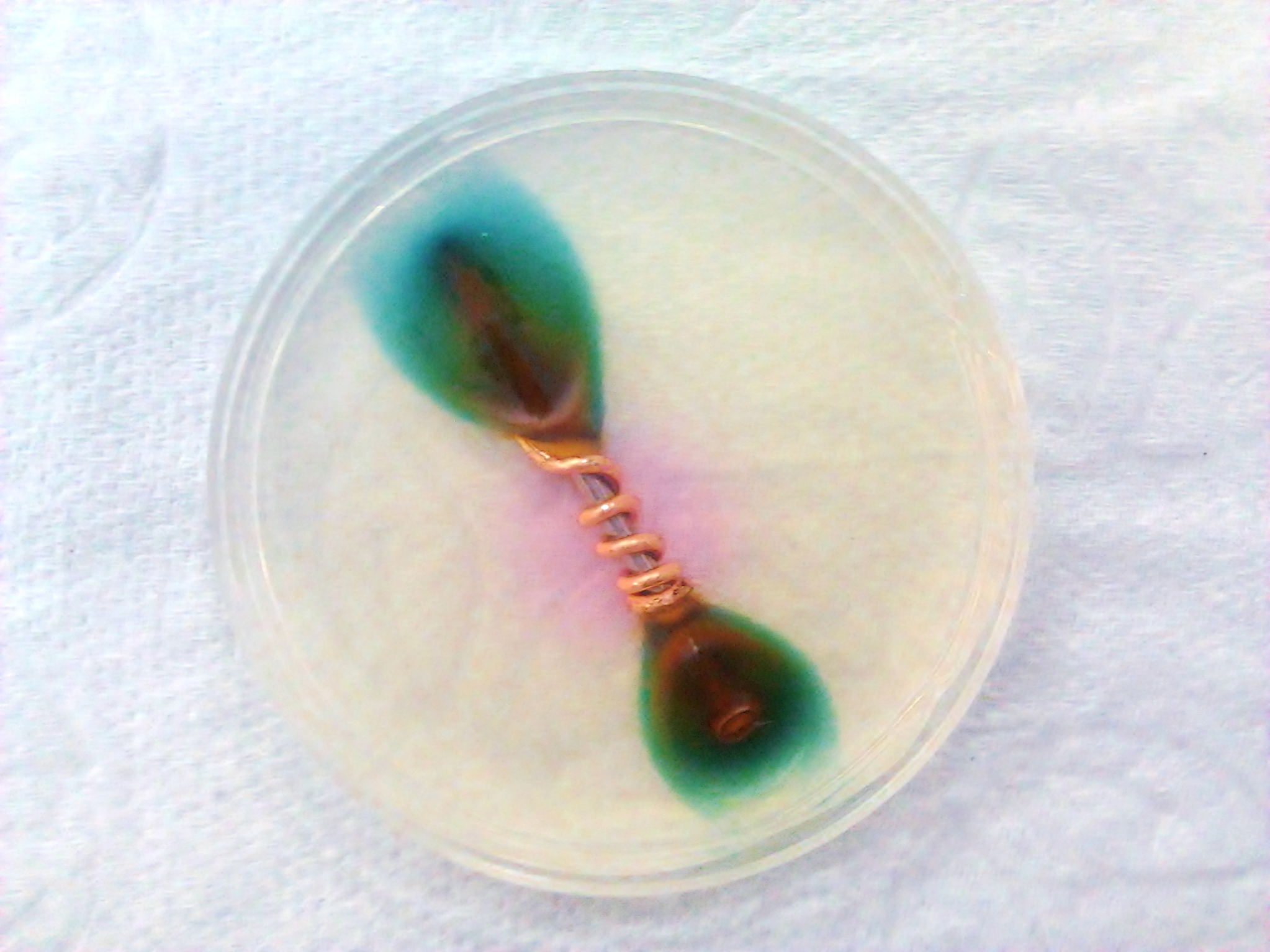Galvanic Corrosion is an
electro/chemical process in which one metal corrodes preferentially
to another when both metals are in electrical contact, in the
presence of an electrolyte. wikipedia.com
In plumbing the process takes place
when pipes, made of different metals, are joined together. Most often
this is copper and galvanized steel water pipe. Water in the system,
along with minerals and various chemicals contained in drinking
water, provides the electrolyte bath. The most common occurrence is
at water heaters where copper water pipe connects to the steel tank
of the heater.
As you can see in the photo, the iron
nail is being corroded by the copper wire. In galvanic corrosion the
greater the difference of electro-potentials of the metals the faster
corrosion takes place. In the case of copper and galvanized steel the
difference is quite large, even greater than the iron nail shown. In
situations where copper pipes are directly connected to steel pipes
the steel corrodes quickly.
If we have a water heater, which has a
steel tank with two threaded steel outlets, and copper adapters are
screwed directly into those outlets, it is only a matter of time
before the steel corrodes and the tank begins to leak. When the tank
begins to leak there is no choice but to replace the heater.
So why does anyone connect copper pipes
to a steel water heater tank, and how can we make a connection that
will not cause corrosion?
People make direct connections because
they don't understand galvanic corrosion and/or they don't know the
proper way to connect dissimilar types of pipe. The goal is simply to
keep the dissimilar metals away from each other. Teflon tape or pipe
joint compound on the threads will not accomplish this! We need
better isolation. In the picture below you can see that the copper
adapters which were connected directly to the water heater tank have
been removed and replaced by isolating nipples.
The nipples used in the tank are
“dielectric nipples” made of a non-conductive allow and lined
with plastic. This breaks the electrical bond between the dissimilar
metals and also with the water (electrolyte) inside the pipe. From
there I used a heavy brass push-on fitting to eliminate the need of
soldering.
We could also use a dielectric union.
They use a rubber gasket between the union faces and a plastic collar
between the union nut and the copper part of the union to isolate the
dissimilar metals from contact. The goal again is to keep the
dissimilar metals and the electrolyte bath provided by the water
inside the pipe from making contact.
We have looked at water heaters, but
anywhere copper meets steel is a potential for corrosion. In older
homes and buildings galvanized water mains are often replaced or
repaired using copper tubing without proper isolation. This only
causes already corroded pipes to corrode faster. Anywhere copper or
brass meets steel dielectric nipples and/or fittings should be used
for the transition.
As you can see in the picture above it
is not a difficult nor expensive procedure to properly isolate your
steel water heater tank from the copper water lines attached to it,
and it could prevent the very costly need to replace a corroded and
leaking water heater. Dielectric nipples are available in pairs for
under $10 (USD) and push-on fittings are around $6 (USD) each, so for
less than twenty-five bucks you can save yourself from having a
corroded water heater. That replacement could run over a grand!







